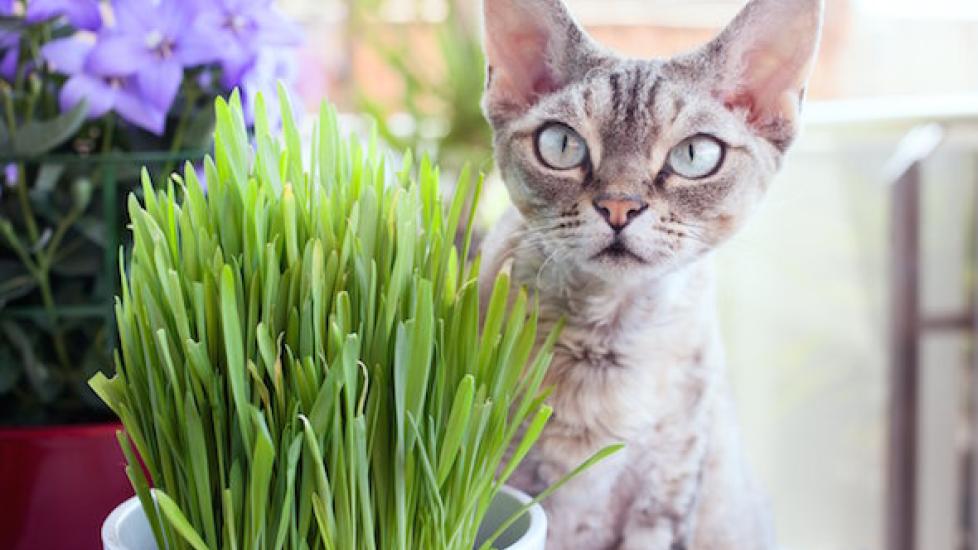What is Cat Grass? Learn How to Grow Cat Grass for Your Pet
By Stacia Friedman
Nibbling on grass is a natural behavior for all cats. If you have an outdoor cat, chances are it’s part of your kitty’s daily routine. But if your pet spends all of its time indoors (like most domestic cats), you may want to consider growing cat grass in your home.
Why Do Cats Eat Grass?
“Research has not yet shown why cats eat grass, but we have several ideas,” said Carlo Siracusa, animal behaviorist of University of Pennsylvania School of Veterinary Medicine. “In the wild, cats eat grass after they have eaten their prey. In many cases, the grass causes the cat to vomit. We believe this is nature’s way of helping the cat expel the parts of their prey that are indigestible.”
Even if your indoor cat has never caught a mouse or bird, she will instinctively be attracted to cat grass. Why? “It’s a behavioral instinct,” Siracusa says. “Grass is also a form of fiber that helps cats either throw up hairballs or digest them by acting as a laxative.”
Another theory is that cats may eat grass for some trace minerals and the vitamins A and D. Grass also contains chlorophyll, which, before the discovery of antibiotics, was a remedy for pain, infection, ulcers, skin diseases and anemia. Grass also contains folic acid, which helps with the production of hemoglobin, the protein that moves oxygen into the blood to help kitty’s circulation. Plus, there’s the benefit of breath cleansing chlorophyll.
Vet Recommended Health Support
What is Cat Grass?
Not to be confused with catnip, which is a member of the mint family, cat grass is typically grown from rye, barley, oat or wheat seeds. You will find a variety of kitty grass kits at your local pet store, which contain everything you need, including seeds, soil and a potting container. All you’ll need to provide is water and sunlight, and within one week, your cat will have her very own organic garden for safe, healthy nibbling.
“Cat grass is safer than outdoor grass which may have been chemically treated with pesticides,” Siracusa said. “It also gives your cat a healthy alternative to nibbling on houseplants and flowers, many of which are toxic to cats.”
Talk to your veterinarian before you bring any flowers or plants, including cat grass kits, into your home.
Is Cat Grass Safe?
Cat grass is a safe alternative to outdoor grass, which can be treated with weed killers or other pesticides, and to certain houseplants, which can be toxic. It provides your cat with an opportunity to engage in a natural behavior. For outdoor cats, an indoor garden provides a healthy alternative to nibbling on the neighbors’ possibly pesticide-laced lawn. For indoor cats, it offers a delicious taste of the outdoors.
How to Grow Cat Grass
Your cat grass kit will likely come with easy-to-follow directions, but here are some basic tips for caring for and growing cat grass:
- Before sprouting, seeds should be kept damp but never soaked. Once sprouts appear, use less water.
- Allow three to seven days for seeds to sprout.
- The grass will be ready for your cat to eat in 10 to 14 days after sprouting, or once it has reached a height of four inches, and will last one to three weeks.
- Continue to keep it in natural light and water daily with a spray bottle.
- Do not over water, as this causes mold.
- Allow your cat to eat directly from the container.
- When the grass starts to wilt or turn color, plant a new container.
Image: Veera / Shutterstock
